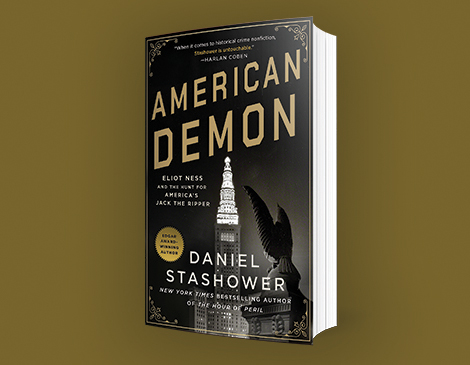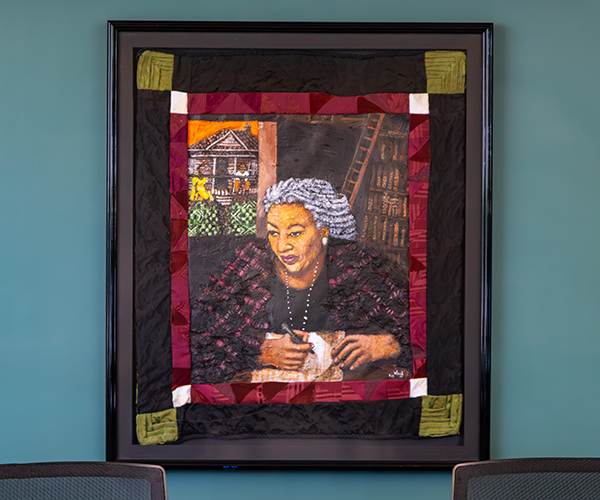An old newspaper clipping is tacked to historical crime author Daniel Stashower’s office wall. “If you enjoy feeling your flesh creep, feeling the small hairs rise on your neck and your heart pound with shameless fear,” reads the eerie prose from Pulitzer Prize winner William Miller, “if that’s what you like, just take a midnight tour through Kingsbury Run.”
Written in 1936 for the Plain Dealer, the passage offered a roadmap for the Edgar Award-winning author’s latest piece of nonfiction, American Demon: Eliot Ness and the Hunt for America’s Jack the Ripper, on sale Sept. 6 ($29.99, Minotaur Books). Stashower, a Cleveland-native who now lives in Washington, D.C., has wanted to set a story in his hometown for years. Eventually, he found just the one to tell.
The two-pronged plot explores the intersection of Eliot Ness, the federal agent who took down Al Capone before becoming Cleveland’s safety director, and Cleveland’s infamous Torso Murders, his local mark.
"Ness's second act in Cleveland is every bit as important as his first act in Chicago,” Stashower says. “He’d been told the job was impossible, but he put his back into it.”
Stashower sheds light on the cold case and the personal connection he discovered as he investigated it.
Cleveland Magazine: What intrigued you about this chapter of Cleveland history, and how does it fit into the larger story of the city?
Daniel Stashower: When I was about 8 or 9, I heard a really grisly telling of the story around a campfire. You really didn’t have to exaggerate too terribly much to turn the story of the Torso Murders into the stuff of nightmares.
Cleveland had been an economic powerhouse — the city on the way up before the Great Depression. This new reform-minded mayor, Harold Burton, understood that in order for the city to revive its rugged economic health, it had to clamp down on crime. He felt that Ness was the person to do that. The [torso killings] would have commanded a lot of attention in any city at any time. But in Cleveland, they seem to have been almost calculated to scuttle the city’s economic recovery.
CM: What surprised you most?
DS: The police effort was just incredible. The coroner pulled together a panel of experts to produce what they called a synthetic portrait of the killer. Today, we would recognize that as profiling.
There’s another stage where the police were looking for a particular suspect, but all they had was a photo from when he was 12 years old. So, they projected it on canvas and an artist altered and embellished the image to approximate the man’s current appearance. This is like age progression software. The police put their backs in it. They went at it with everything they had.
CM: Which locations and research inspired and informed your writing?
DS: Kingsbury Run — this ancient, dried-up riverbed — is not like it was during the depression years, but it was fun to go there and try to soak up some of the echoes, some of the shadows.
I spent a lot of time [at] the Western Reserve Historical Society. One day I found a picture of my grandfather in Ness’s scrapbooks. Turns out that Ness and my grandfather must have crossed paths at least once a year at this event called the Anvil Review, which was a political roast.
My grandfather, I came to find out, was a cast member for years and years. What a surprise this was, for me, to be paging through these scrapbooks and there’s all these era’s shining lights, FDR and John D. Rockefeller and J. Edgar Hoover, but I did not expect to find Fred P. Stashower.
Get more great Northeast Ohio stories by signing up for our free weekly “In the CLE” newsletter — your guide to fun throughout The Land. Arriving in your inbox every Wednesday, this weekend to-do list fills you in on everything from concerts to museum exhibits — and more. Click here to subscribe.




